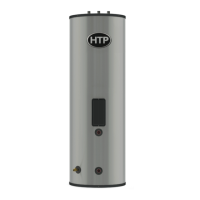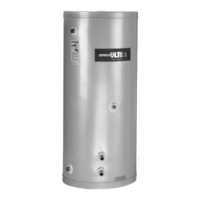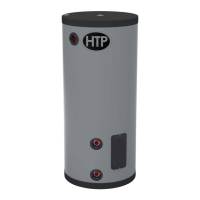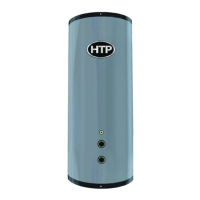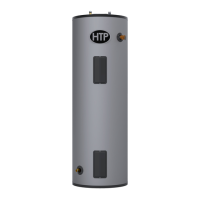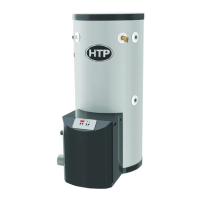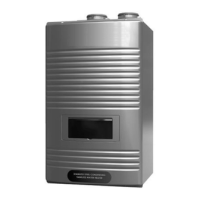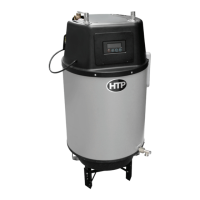lp-65 Rev. 1.6.15
5
Figure 2 - Dimensions
Chemical imbalance of the water supply may aect eciency
and cause severe damage to the water heater and associated
equipment. HTP recommends having water quality
professionally analyzed to determine whether it is necessary to
install a water softener. It is important that the water chemistry
on both the domestic hot water and central heating sides are
checked before installing the water heater, as water quality
will aect the reliability of the system. In addition, operating
temperatures above 135
o
F will further accelerate the build-up of
lime scale and may shorten the service life of the water heater.
Failure of a water heater due to lime scale build-up, low pH, or
other chemical imbalance IS NOT covered by the warranty.
soft, slightly hard, moderately hard, or hard based on its hardness
number. The minerals in the water precipitate out as the water is
heated and cause accelerated lime scale accumulation on a heat
transfer surface. This lime scale build-upmay result in premature
failure of the water heater. Operating temperatures above 135
o
F
will further accelerate the build-up of lime scale and may shorten
the service life of the water heater.
Water that is classied as hard and very hard must be softened to
avoid water heater failure.
CLASSIFICATION MG/L OR PPM GRAINS/GAL
Soft 0 - 17.1 0 - 1
Slightly Hard 17.1 - 60 1 - 3.5
Moderately Hard 60 - 120 3.5 - 7
Hard 120 - 180 7 - 10.5
Very Hard 180 and over 10.5 and over
If the hardness of the water exceeds the maximum level of 7 grains
per gallon, the water should be softened to a hardness level no
lower than 5 grains per gallon. Water softened as low as 0 to 1
grain per gallon may be under-saturated with respect to calcium
carbonate, resulting in water that is aggressive and corrosive.
pH of Water
pH is a measure of relative acidity, neutrality, or alkalinity. Dissolved
minerals and gases aect water pH. The pH scale ranges from 0
to 14. Water with a pH of 7 is considered neutral. Water with pH
lower than 7 is considered acidic. water with a pH higher than 7 is
considered alkaline. A neutral pH (around 7) is desirable for most
potable water applications.
Corrosion damage and tank
failures resulting from water
pH levels of lower than 6
or higher than 8 ARE NOT
covered by warranty. The
ideal pH range for water used
in a water heater is 7.2 to 7.8.
Total Dissolved Solids
Total Dissolved Solids (TDS) is
a measurement of all minerals
and solids dissolved in a water
sample. The concentration of
TDS is usually expressed in
parts per million (ppm).
Water with a high TDS
concentration will greatly
accelerate lime and scale
formation in the hot water
system. Most high TDS
concentration precipitate out
of the water when heated.
This can generate a scale
accumulation that will greatly
reduce the service life of the
water heater.
The manufacturer of the
water heater has no control
over water quality, especially
TDS levels in your system.
TDS in excess of 2000 ppm will
accelerate lime and scale formation on the element or the heat
exchanger. Water heater failure due to TDS in excess of 2000
ppm IS NOT covered by warranty. Failure of a water heater due
to lime scale build-up IS NOT covered by warranty.
Hardness: 7 grains
Chloride levels: 100 ppm
pH levels: 6 - 8
TDS: 2000 ppm
Sodium: 20 mG/L
